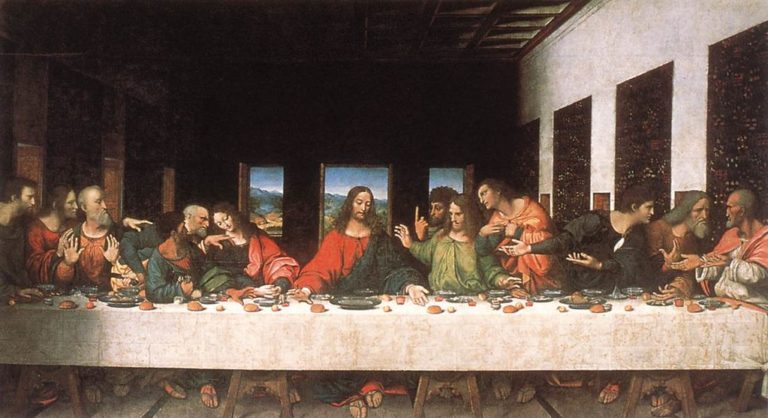Leonardo’s “Last Supper”
Sometime between 1495 and 1496, Leonardo da Vinci painted one of Western art’s true masterpieces: The Last Supper. His then-patron, Ludovico Sforza, Duke of Milan, commissioned the work for the refectory of the Convent of Santa Maria delle Grazie. Ludovico had recently undertaken the building of the convent on the site of the Chapel of St. Mary of the Graces, built earlier by his father, Francesco.
Leonardo’s “canvas” for this work was huge by his standards. The Mona Lisa, for instance, is 30.2 x 20.9 inches. His previously largest painting, the unfinished Adoration of the Magi, is 94 x 98 inches. But you could hang almost any Leonardo canvas on any wall in your house – except The Last Supper, which is five yards tall by almost ten yards wide.
If only Leonardo had painted it on canvas!
But it’s a fresco. Painters of frescos work by laying down new lime plaster over stone walls and painting quickly with water-based powdered pigments that dry with the plaster: all fresh (fresco in Italian) ingredients. The damp plaster and the wet pigments dry together, integrated, and can be amazingly long-lived: on the Greek island of Santorini, there are still-visible Minoan frescos painted more than 3600 years ago.
Click here to read the rest of Mr. Miner’s column at The Catholic Thing . . .



